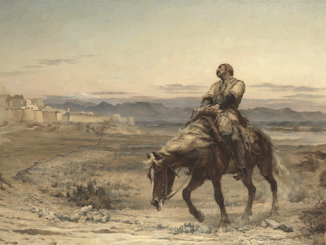The Elan Valley is a picturesque haven for nature lovers and adventure enthusiasts. Nestled within the Cambrian Mountains region, this area is often referred to as the last wilderness in Wales due to its unspoilt landscapes, rich wildlife, and quaint small communities. The valley is renowned for its impressive network of dams and reservoirs, such as Craig Goch Dam and Pen y Garreg Dam, which were built over a century ago to supply water to Birmingham. These structures offer visitors a unique opportunity to delve into the area’s historical past while taking in the breathtaking views.
Beyond the dams, the Elan Valley is a paradise for outdoor activities. You can embark on scenic hikes or mountain biking along the Elan Valley Trail, or try sailing and kayaking. The Red Kite Feeding Station & Rehabilitation Centre and pony trekking by Lion Royal offer a thrilling interaction with local wildlife. In addition, the valley is also internationally recognized for stargazing, having achieved the International Dark Sky Park status in 2015. Whether you prefer leisurely picnics amidst natural beauty, structured guided tours, or adventurous activities, the Elan Valley has something to offer for everyone.
The dams themselves are listed structures and are recognised as being of architectural and historical interest as well as continuing to serve their original purpose, supplying Birmingham with a reliable source of clean water. A number of different dams make the most of the hillsides by keeping the water level as high as possible further up the valley.

© Always Wortth Saying 2023, Going Postal
The one pictured above is the Craig Goch Dam, photographed by my grandparents after a bit of a scramble down the hillside from the road. This is the uppermost of the dams and the closest to Aberystwyth where my grandparents stayed on their 1932 late-honeymoon motorcycle and sidecar road trip.
The cascade of reservoirs created by the dams stretches for nine miles roughly north to south with another mile or so of water branching eastwards towards Elan village and the Caban Coch Dam where the aqueduct to Birmingham begins. The Afon Elon river also emerges from the dam and subsequently joins the River Wye, which in turn joins the Severn near the first Severn road bridge.
The Elan Valley Aqueduct is a remarkable piece of engineering that carries drinking water from the Elan Valley Reservoirs to Birmingham. It spans a total of 73 miles and takes approximately one and a half days for the water to traverse this distance. The project commenced in June 1896 under the guidance of engineer James Mansergh. The construction of the aqueduct was compartmentalized, with different sections employing various construction methods. It included the use of siphons, pipelines, tunnels, and cut-and-cover conduits. Moreover, the aqueduct route goes through several towns, crossing canals and railways.

© Google Maps 2023, Google licence
Despite most of the aqueduct being underground, there are visible landmarks along the route, making it an interesting path for walking trails. Two popular trails include the Bringewood Trail and the Severn Trail, offering picturesque views of the Shropshire countryside, Trimpley Reservoir, and the Elan Valley Aqueduct crossing. These trails not only provide a scenic walk but also offer spots perfect for a picnic.
James Mansergh & Birmingham Corporation Water Department
The Birmingham Corporation Water Department was the entity responsible for supplying water to England’s second city from 1876 to 1974. This responsibility began when the Birmingham Corporation Act in 1875 allowed the corporation to purchase the Birmingham Waterworks Company, originally formed in 1808. The department used various sources including rivers, wells, and reservoirs to meet the city’s growing demand for water. In 1892, the Birmingham Corporation Water Act authorized the construction of the Elan aqueduct, providing additional water from Wales to Birmingham. However, in 1974, the department was dissolved, and its obligations were transferred to the Severn Trent Water Authority which was privatised in 1989 to become Severn Trent Water.
Aquaduct architect James Mansergh was a highly esteemed civil engineer in the 19th century, known for his significant contributions to public health and municipal infrastructure. He was born in 1834 in Ireland and studied engineering in Dublin. Mansergh is most famous for the Elan Valley Aqueduct project for which he designed the elaborate system of siphons, pipelines, and tunnels to transport water over the necessary 73 miles. His innovative design ensured a steady flow of water without the need for pumping stations. Despite the complexity and challenges of the project, it was completed on time and within budget, a testament to Mansergh’s exceptional skills and leadership.
Nantgwyllt
Although sparsely populated, when the valley was flooded about 100 people had to be relocated, including the inhabitants of the little community of Nantgwyllt which sat at the confluence of the rivers Elan and Claerwen. A 1905 map suggests the valley contained a church, a chapel, a schoolhouse, and 18 dwellings that were mainly cottages and farmhouses.
The church was visited by Shelley in 1811 while the poet stayed nearby at the most impressive of those 18 dwellings, Nantgwyllt House, the ancient family seat of the Lewis-Lloyds. In 1892 a touring guide observed,
“Nantgwyllt mansion is on the borders of the Claerwen, which is here, perhaps, even more beautiful than the Elan. On the undulating lawn between the house and the stream some fine larches are noteworthy.”
In 1894 the house was described as being,
“romantically situated on a projecting spur in the midst of magnificent fir trees, backed by wooded slopes of oak, spruce and larch, interspersed with towering groups of Scotch fir. A lawn in front sloped down to the river, affording a fine view down the broad vale to the eastward.”

Nantgwyllt manor house,
Unknown photographer – Public domain
All of which was sadly lost upon the flooding of the valley. Or was it? In the decades that followed, local legend suggested the house remained intact beneath the surface of the reservoir. In the same year as my grandparents’ visit, 1932, a book by Francis Brett Young was published entitled “The House Under The Water”. This was one of Young’s Mercian novels set in the West Midlands and Welsh Borders and was made into a BBC TV series in 1961.
Sadly, the eight 30-minute episodes are thought to be lost. Also lost is the idea that the house still stands. Long before the TV series was broadcast, the legend of the standing house was quashed when a 1937 drought lowered the reservoir level sufficiently to show nothing remaining of the Nantgwyllt house other than the lower courses enclosing its walled garden.
Brett Young was an interesting chap. An old boy of Cottage High School, Sutton Coldfield, and Epsom College, he studied medicine at Birmingham University before entering general practice. His wife, Jessie Hankinson, was a notable singer and soloed in the Promenade Concerts.
As well as general practice and writing novels, Dr Brett Young served in the Royal Army Medical Corp in East Africa. After the Great War, he moved to Capri, subsequently to Craycombe House in Worcestershire (where he wrote ‘The House Under The Water’) and then to South Africa where he died in 1954. His ashes are interred in Worcester Cathedral.
Two years previous to his passing there was another addition to the Elan complex when the Claerwen Dam was built in a neighbouring valley. Bigger than all the Elan reservoirs combined, Claerwen was required for an ever-expanding post-war Birmingham conurbation. It flows into the Elan complex via the Afon Claerwen River.
Closer to home
Impressive, but en route from their home in Carlisle to North Wales my grandparents will have passed near another remarkable public water scheme – the Lake District’s Thirlmere. This reservoir was created in the 19th century to supply water to the rapidly expanding city of Manchester. Prior to the reservoir’s construction, a smaller natural lake existed in the valley.
Although there were initial proposals to use Thirlmere and other nearby lakes to supply water to London, these plans were eventually dismissed. The Duke of Richmond’s Royal Commission on Water Supply recommended that towns should not appropriate water sources that naturally belong to other places unless special circumstances warrant such a move.
Presently, Thirlmere reservoir and the surrounding catchment area are owned and managed by United Utilities. They are currently working on a project to install new pipelines to deliver drinking water from Thirlmere to homes and businesses in West Cumbria.
Additionally, Thirlmere is open to the public and offers a variety of walking trails for different abilities and activities. It provides picturesque walks around the reservoir, along its shoreline, and within the surrounding fells and forest. The view from Raven Crag (below) shows the length of the reservoir, the dam to the left and Helvellyn (as if approached from the Swirls car park route) on the right.

© Google Maps 2023, Google licence
Water flows via the Thirlmere Aqueduct, a remarkable feat of engineering that was constructed between 1890 and 1925 to carry water to Manchester, a distance of 95.9 miles. It is the longest gravity-fed aqueduct in Britain and does not require any pumps to function. The water takes approximately a day to reach Manchester. The aqueduct is not a single tunnel, but a combination of tunnels and cut-and-cover sections. Some sections of the aqueduct have been modified over time for the construction of motorways. The entire infrastructure was a response to the growing demand for water in post-industrial revolution Manchester.
In the week in which Birmingham went bankrupt, one wonders what the likes of Dr Brett Young and Engineer Mansergh (and the men who worked on the Elan and Thirlmere triumphs) would make of the present state of affairs.
© Always Worth Saying 2023



